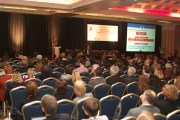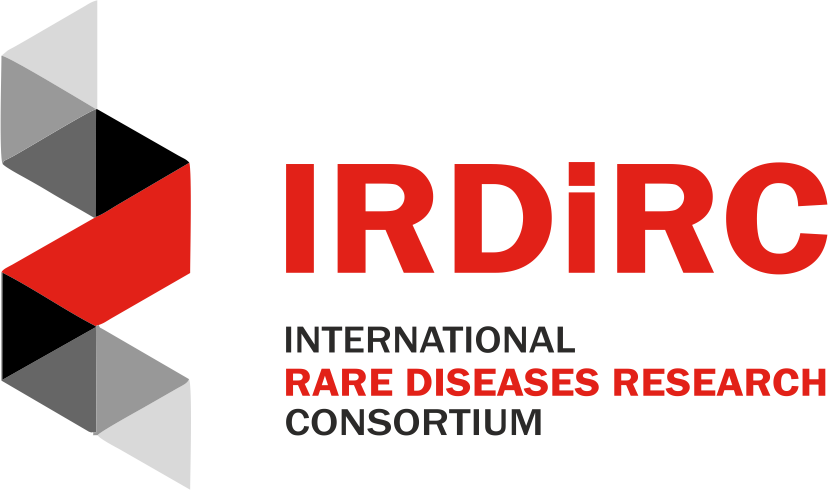
[toc]
The first IRDiRC conference was held on April 16-17, 2013 in Dublin, Ireland. It was attended by more than 400 participants coming from Europe, North America, Australia and Asia. During that conference, it was recognized that expertise in rare disease, just as patients, are scattered around the world. It is thus necessary to share all knowledge and competence, and to push the need for more regulatory success for orphan drugs. Collaboration between global rare disease community is the key to success. For more details, please consult the conference report.
You can also access the conference program and poster abstracts.
PowerPoint presentations of the speakers, organized by sessions, are accessible below.
Opening Session
- Welcome address – Ruxandra Draghia-Akli, European Commission
- Collaborative rare diseases research activities at NIH – Christopher Austin, National Center for Advancing Translational Sciences, NIH, USA
- The haystack is made of needles: a global view of rare diseases – Sharon Terry, Genetic Alliance, USA
- Partnership in rare diseases. To partner or not to partner? – Hans Schikan, Prosensa, The Netherlands
Diagnostics
Track 1 – The Depth of Rare Diseases
- Patient-led initiative to identify the molecular cause of rare inherited retinopathies – Avril Daly, EURORDIS, Fighting Blindness, Ireland
- FORGE Canada: a nation-wide effort to identify genes for rare childhood disorders – Kym Boycott, Children’s Hospital of Eastern Ontario, University of Ottawa, Canada
- A large scale initiative to identify the genes underlying rare mendelian conditions – Michael Bamshad, University of Washington School of Medicine and Seattle Children’s Hospital, USA
- Deciphering Developmental Disorders (www.ddduk.org) – a UK wide project to transform the diagnosis of rare childhood disorders – Helen Firth, Cambridge University, UK
- A multi-omics approach for monogenic disease research and application at BGI – Wei Wang, BGI, China
Track 2 – Diagnosis of Rare Diseases
- Quality assurance and guidelines for validation of next-generation sequencing tools – Gert Matthijs, University Hospital Leuven, Belgium
- Coupling sequencing and functional studies to improve outcomes in neonates – Nicholas Katsanis, Duke University Medical Center, USA
- Clinical whole exome sequencing for the evaluation of genetic disorders – Christine Eng, Baylor College of Medicine, USA
- Complexity of NGS approaches in neurological disorders: new role of medical genetics in clinical guiding – Olaf Riess, University of Tübingen, Germany
Track 3 – The Human Phenome
- The need for comprehensive, standardized phenotyping in the era of genome-wide sequencing – Ada Hamosh, Johns Hopkins University School of Medicine, USA
- An ontological foundation for rare disease diagnostics and novel disease-gene discovery – Peter Robinson, Charité – Universitätsmedizin Berlin, Germany
- An ecosystem approach to connecting and collecting rare disease data – Anthony Brookes, University of Leicester, UK
- Translating allelic heterogeneity to clinical practice: the CFTR2 project – Garry Cutting, Johns Hopkins University School of Medicine, USA
Therapies
Track 1 – Deploying Existing Compounds: Repurposing Strategies
- Repositioning existing drugs for rare diseases – Kevin Lee, Pfizer, UK
- NIH-Industry Pilot Program: discovering new therapeutic uses for existing molecules – Christine Colvis, National Center for Advancing Translational Sciences, NIH, USA
- Designing strategies for therapeutic progress in rare kidney diseases – Franz Schaefer, University of Heidelberg, Germany
- Biomarkers discovery in rare diseases and implications for therapy – Alessandra Ferlini, University of Ferrara, Italy
- Repurposing nitisinone for black bone disease: lessons from the EC-funded DevelopAKUre project – Nick Sireau, AKU Society, Cambridge, UK
Track 2 – Developing Innovative Orphan Therapies
- Hematopoietic stem cell gene therapy for rare diseases: current experience and future perspectives – Luigi Naldini, San Raffaele Telethon Institute, Milan, Italy
- AAV-mediated gene therapy for rare disorders: new possibilities for treatment of genetic disease – Katherine High, University of Pennsylvania, USA
- Antisense-mediated exon skipping: applying lessons learnt from Duchenne muscular dystrophy to other rare diseases – Annemieke Aartsma-Rus, University of Leiden, the Netherlands
- Establishing multicenter international gene therapy trials for blood genetic diseases – Anne Galy, Genethon, France
Track 3 – Regulatory Dialogue to Optimise Orphan Drug Development
- Elements for optimising orphan drug development – industry perspective – Wills Hughes-Wilson, EFPIA-EBE, Belgium
- The EMA policy in fostering orphan development – Jordi Llinares, European Medicines Agency
- The FDA policy in fostering orphan development – Katherine Needleman, U.S. Food and Drug Administration
- Accelerating biotechnology innovation for rare diseases: challenges and solutions – Emil Kakkis, ULTRAGENIX Pharmaceutical Inc Novato, USA
- Canadian policy in fostering orphan drug development – David K. Lee, Health Products and Food Branch, Canada
- Regulatory dialogue to optimise orphan drug development: patients’ experience and perspectives – Yann Le Cam, EURORDIS
Interdisciplinary
Track 1 – Building the Tools
- A mouse for every gene: large-scale mouse model production and phenotyping for functional annotation of the genome for biology and drug discovery – Colin McKerlie, The Hospital for Sick Children, Toronto, Canada
- Animal models in mitochondrial disorders – Massimo Zeviani, Istituto Neurologico “C. Besta”, Milan, Italy & MRC Mitochondrial Biology Unit, Cambridge, UK
- Using pluripotent stem cells to model genetic disease of the heart – Chris Denning, University of Nottingham, UK
- A model structure for advancing rare diseases research – Jeffrey Krischer, University of South Florida College of Medicine, USA
Track 2 – Ensuring the Collaboration
- Rare disease partnerships : a model for a new era of drug development – Cristina Csimma, Cydan Development Inc., USA
- Telethon and Shire: a public-private partnership to translate the results of basic research to therapies for patients – Lucia Monaco, Fondazione Telethon, Italy & Philips Vickers, Shire Human Genetic Therapies, USA
Track 3 – Facing the Challenges
- Delivering on the promise: the clinical application of new diagnoses and treatments for rare diseases – Kate Bushby, Newcastle University, UK
- “Big” Pharma: from data hoarding to data sharing? – Bartha Knoppers, McGill University, Montreal, Canada
- Challenges: the patients’ perspective – Maria Mavris, EURORDIS, France
- Incidental pitfalls with whole genome/exome sequencing (WGS/WES results) – Jack Goldblatt, Genetic Services and the Familial Cancer Programme of Western Australia
Forward Look Session
- International rare diseases research Consortium – Paul Lasko, Institute of Genetics of the Canadian Institutes for Health Research, Canada
- Inherited disorders of neuromuscular transmission – from gene discovery to tailored treatments – Hanns Lochmüller, University of Newcastle upon Tyne, UK
- How a successful gene hunt is saving lives, changing practices and influencing policies – Terry-Lynn Young, Memorial University, St John’s, Newfoundland and Labrador, Canada
- Alternating hemiplegia of childhood: the journey to the gene discovery and effective treatments – Tsveta Schyns, European Network for Research in Alternating Hemiplegia (ENRAH)
- Unravelling the jargon – Lesley Murphy, Rare Voices Australia
- Ten years of translational research in rare progeroid diseases – lessons and perspectives for rare diseases – Nicolas Levy, INSERM Research Centre Marseille, France
- Unexpected genetic architectures underlying rare blood diseases: lessons learned from the BRIDGE project – Chris Van Geet, University of Leuven, Belgium

